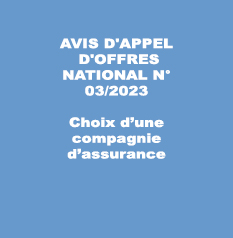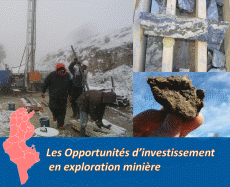| Programme annuel & rapport de suivi technique |
-

Rapport d'activités 2023
-

Programmes Techniques 2024
|
| Géocatalogue |

|
| Appels d'Offres |
-

ACQUISITION DES TICKETS RESTAURANT POUR LE PERSONNEL DE L’ONM
-

CHOIX D’UNE COMPAGNIE D’ASSURANCE
-

ACQUISITION ET MISE EN ŒUVRE D’UN PROGICIEL DE GESTION INTEGRE
|
|
Investir en Tunisie |


|
|
|
|
|
::
Documentation and Editions
>>
Research library
|
| |
|
[
Search by author
]
[
Search keyword
]
[
Search by index
]
[
Search by category
]
|
title of the reference :
|
Tunisia's oil and gaz potential and future plays
|
|
Publication Date:
|
1994
|
|
Author :
|
Pratsch J.C.
|
|
Catalogue type :
|
Livre
|
|
Catalogue reference :
|
Tunisia's oil and gaz potential and future plays "Tunisia's ultimate oil and gas reserve in existing field areas are estimated to be over 1,7 billion Bbls oil and about 3,0 trillion Cu Ft gas. Her past oil cumulative production was over 800 million BO in 1988 and is now about 900 million BO. The future reserve potentiel appears to be in the range of several hundred million Bbls oil and/or gas equivalents.Tunisia's petroleum geology is controlled by three main geological units: *The stable Sahara Platform geology on the northen continental margin of the Africain craton, *The Late cretaceous to recent Atlas Mobile Belt along the passive and the active northen end of Africa and its foreland, and *A stable offshore platform (""Pelagian Platform"") in the offshore with rifting of at least Tertiary age. Of these units all but the Atlas Belt and its immediate foreland have been found productive. Oil and gas fieldsin Tunisia lie inside or on the fronks of present regional structural loxs or depocenters: 1-On the north end of the Sahara Plateform, synclinal geometry south of the limiting Telemzane High has let to major latery oil migration to the north and to the oil fields of the El Borma region and northwest Libya .Ultimide reservoirs of over 700 million BO exist in Paleozoic and Triassic sandstones.2-The north and east flanks of the central Tunisian Cretaceous Carbonate Platform contains local and relatively small depocenters. Reserves are equally small. The producing oil field are in the general Douleb and Sfax regions. 3-The large Cap Bon gas field in Early Cretaceous sandstones appeares to be the result of one-oil even to-sided lateral gas migration from flanking larger depocentre lows. Several oil discoveries in the area directly to the south of the Cap Bon gas field found oil in porous and fractured Cretaceous Abiod chalk. 4- In the Tunisian offshore there are four producing areas :a) A cretaceous Petroleum System around the Isis oil and gas field, producing from Cretaceous Carbonates, b)The Miskar field area with production from Cretaceous carbonates, related probably to the Isis field Petroleum System. C)The Lower Eocene Petroleum System with the Ashtart and Sidi El Itayem fields (jointly some 700 million BO reserves ), as well as the El Bouri field in offshore Libya with over 700 million BO. d)Small oil fields and several single discovery wells in the northeast of Tunisia's offshore around the Tazarka field, producing from Miocene and Cretaceous reservoirs. Their source beds seem to be of Pre-Miocene age(s). Future oil and gas plays in Tunisia exist on the Saharan Platform north flank, in the offshore and in the Atlas Mobile belt and its foreland. Of these region, the west-central onshore basinal feature contains Tunisia's largest future potential and the largest chance to find additional major oil and gas reserves in the next decade.This feature has been interpreted as deep crustal feature. However, in addition, this area is believed to contain a major Paleozoic basin with major oil and gas possibilty. This play is practically un-explored. Even if the expected Triassic and Pre-triassic targets are found to contain largely gas, a major marketing possibility for such major tunsian gas now is realistic with the construction of the North Africa-West Europe pipeline system across the steets of Gibralter. Europe will remain gas-hungry demanding large gas imports from different areas. The key to future exploration success in Tunisia is the full integration to geological, geophysical and geochemical data in the regional dimension. Some of the key element here are the geometry of region al structure of generative depocenters as well as the availability of modern geochemical data."
pétrole ; gaz ; réserve ; anomalie Bouguer ; Tunisie Pratsch J.C. Roches sédimentaires
|
|
Indexation decimale :
|
Roches sédimentaires
|
|
Keywords :
|
pétrole ; gaz ; réserve ; anomalie Bouguer ; Tunisie
|
|
Summary :
|
"Tunisia's ultimate oil and gas reserve in existing field areas are estimated to be over 1,7 billion Bbls oil and about 3,0 trillion Cu Ft gas. Her past oil cumulative production was over 800 million BO in 1988 and is now about 900 million BO. The future reserve potentiel appears to be in the range of several hundred million Bbls oil and/or gas equivalents.Tunisia's petroleum geology is controlled by three main geological units: *The stable Sahara Platform geology on the northen continental margin of the Africain craton, *The Late cretaceous to recent Atlas Mobile Belt along the passive and the active northen end of Africa and its foreland, and *A stable offshore platform (""Pelagian Platform"") in the offshore with rifting of at least Tertiary age. Of these units all but the Atlas Belt and its immediate foreland have been found productive. Oil and gas fieldsin Tunisia lie inside or on the fronks of present regional structural loxs or depocenters: 1-On the north end of the Sahara Plateform, synclinal geometry south of the limiting Telemzane High has let to major latery oil migration to the north and to the oil fields of the El Borma region and northwest Libya .Ultimide reservoirs of over 700 million BO exist in Paleozoic and Triassic sandstones.2-The north and east flanks of the central Tunisian Cretaceous Carbonate Platform contains local and relatively small depocenters. Reserves are equally small. The producing oil field are in the general Douleb and Sfax regions. 3-The large Cap Bon gas field in Early Cretaceous sandstones appeares to be the result of one-oil even to-sided lateral gas migration from flanking larger depocentre lows. Several oil discoveries in the area directly to the south of the Cap Bon gas field found oil in porous and fractured Cretaceous Abiod chalk. 4- In the Tunisian offshore there are four producing areas :a) A cretaceous Petroleum System around the Isis oil and gas field, producing from Cretaceous Carbonates, b)The Miskar field area with production from Cretaceous carbonates, related probably to the Isis field Petroleum System. C)The Lower Eocene Petroleum System with the Ashtart and Sidi El Itayem fields (jointly some 700 million BO reserves ), as well as the El Bouri field in offshore Libya with over 700 million BO. d)Small oil fields and several single discovery wells in the northeast of Tunisia's offshore around the Tazarka field, producing from Miocene and Cretaceous reservoirs. Their source beds seem to be of Pre-Miocene age(s). Future oil and gas plays in Tunisia exist on the Saharan Platform north flank, in the offshore and in the Atlas Mobile belt and its foreland. Of these region, the west-central onshore basinal feature contains Tunisia's largest future potential and the largest chance to find additional major oil and gas reserves in the next decade.This feature has been interpreted as deep crustal feature. However, in addition, this area is believed to contain a major Paleozoic basin with major oil and gas possibilty. This play is practically un-explored. Even if the expected Triassic and Pre-triassic targets are found to contain largely gas, a major marketing possibility for such major tunsian gas now is realistic with the construction of the North Africa-West Europe pipeline system across the steets of Gibralter. Europe will remain gas-hungry demanding large gas imports from different areas. The key to future exploration success in Tunisia is the full integration to geological, geophysical and geochemical data in the regional dimension. Some of the key element here are the geometry of region al structure of generative depocenters as well as the availability of modern geochemical data."
|
|
Exemplaries :
|
-
|
|
|
|
|
|
|
|



